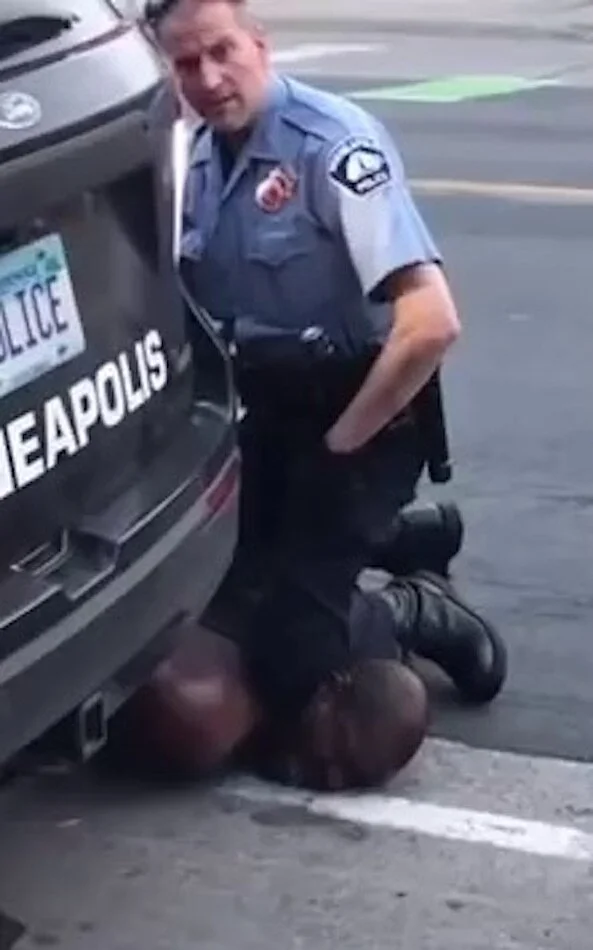Reformers Unable to Stop Police from Murdering a Record Number of People in 2022. But Cops' Uncontrollable, Immoral Power to Initiate Unprovoked Violence and Forcibly Control Citizens is Unreformable
/An essential difference between private security workers and police officers is that security workers possess no government authority or right to initiate unprovoked acts of violence on other people. FUNKTIONARY explains that unprovoked violence against others or the use of “force” is the basis of all social evils and can only be used in the sense of attack not defense. It explains that authority, the right to rule over other people, is not a force but a farce, literally not real or “make believe.”
Allegedly governmental power comes from the people. That is, we delegate our individual power to the government for it to act on our behalf. However, it goes without saying that people cannot delegate powers or rights that they do not possess. So if people have delegated their powers to lawmakers and lawmakers have empowered police officers to act on our behalf, how did police acquire the moral right to commit acts of unprovoked violence on people? Asked differently, if you don’t have the right to initiate unprovoked acts of violence against other people then how can you delegate or authorize police officers or anyone else acting on your behalf to do so? How did government representatives and police acquire such extra or super-human powers? [MORE]
From [HERE] Nearly three years after the police killing of George Floyd in Minneapolis sparked worldwide protests demanding far-reaching reforms to stop law enforcement agents from perpetrating violence against the communities they're meant to protect, new data shows 2022 was the deadliest year on record for people who had police encounters in the United States.
At least 1,176 people were killed by police officers last year, according to the project Mapping Police Violence—the most since experts began tracking police violence and the use of deadly force.
The number represents the killing of more than three people per day on average by police officers, or nearly 100 per month last year.
In 2020, he year Floyd was killed, at least 1,152 people were killed by police officers, and in 2021 1,145 people were killed.
As researchers showed in a study published in The Lancet in 2021, about half of killings by law enforcement agents go unreported, so the true number of people killed by the police last year may be double the figure reported by Mapping Police Violence.
People killed by the police in 2022 included Jayland Walker, who was killed by Akron, Ohio police officers after they chased him following an alleged traffic violation; Donovan Lewis, who was fatally shot by a Columbus, Ohio officer in August after police came to his house with a warrant; and Patrick Lyoya, who was killed by Grand Rapids, Michigan police after he ran away from an officer who grabbed him during a traffic stop due to an issue with his license plate.
In 32% of the cases documented by Mapping Police Violence, the victim was fleeing the police before they were killed. Legal experts say police are almost always unjustified in shooting people when they are running away from law enforcement, particularly after being suspected of committing nonviolent crimes.
"These are routine police encounters that escalate to a killing," Samuel Sinyangwe, a data scientist and policy analyst who founded Mapping Police Violence, told The Guardian. "What's clear is that it's continuing to get worse, and that it's deeply systemic."
Only 31% of police killings took place after an alleged violent crime, while 46% did not involve people who had been accused of violence. Nine percent took place during mental health or welfare checks, 8% involved traffic violations, 18% involved allegations of nonviolent offenses, and 11% involved no alleged offense.
While Black people make up 13% of the U.S. population, they accounted for 24% of the people killed by the police last year.
Bianca Austin, the aunt of Breonna Taylor, who was killed in March 2020 by police officers in Louisville when they executed a warrant in the middle of the night, demanded to know what more advocates can do to stop police violence, especially as lawmakers reject calls for far-reaching reforms and greater investments in communities—rather than police departments—as a way of making people safer.
"It just never stops," Austin told The Guardian. "There was a movement and uproar across the globe, and we're still having more killings? What are we doing wrong? It's so disheartening."
Since the killings of Floyd and Taylor sparked mass protests, legislators have passed police reforms in at least 20 states, including new restrictions on the use of force against fleeing suspects in Colorado, Illinois, and Massachusetts, and bans on chokeholds and neck restraints in California, Nevada, and New York.
According to FUNKTIONARY:
reform - superficial change in form and formalities (fictitious change) which only further lubricates the status quo by renovating and painting old society in new colors. 2) appearance of change sans the change. Reform is always in the service of the status quo and the politician: it serves the privilege of the past not the promise of the future. Reform creates hypocrisy as a matter of course. Reform is the first stage in the three "P,'s" in hue-man evolution; the other two being revolution and rebellion. There are two basic types of reformists: those who are preparing the ground for Third Eye revolution and those who are trying to prevent the conscious revolution. (See: Revolution, Status Quo, Barbarian, Meme & Change)
reformers - naive politicians. They came to do good and stayed to do well. Reformers themselves get reformed into the structure, consciousness and content of the dominant exploitative system--and thus become the system. (See: Revolution)







































































































































































































































































